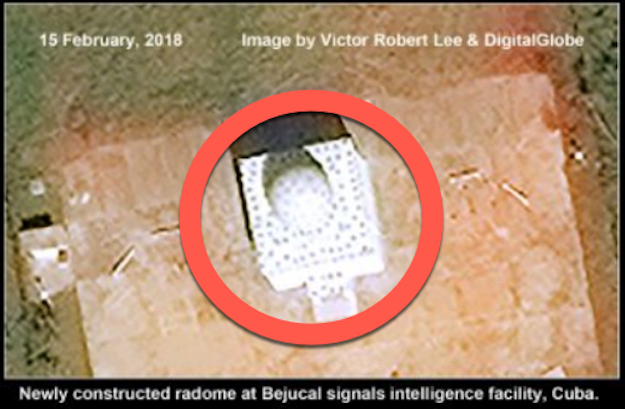
The report focuses on a massive radome sitting on top of an elevated concrete mounting structure. From satellite imagery, the structure looks like a giant golf ball, but it is actually a protective dome housing a super sophisticated radar antenna inside. As mentioned by The Diplomat, this radome is the first of its kind among the various spy antennas at Bejucal, which have been used to intercept electronic communications, ballistic missile monitoring, and tracking of satellites from the United States.
The most perplexing question American military strategists are now asking: who the hell provided the financing to build a new spy base in this third world country?
The Diplomat provides more satellite imagery that shows the construction of the radome near the town of Bejucal between March 2017 and February 2018. While the function of the new radome is unknown from current satellite images, there is an understanding that similar antennas have been used for signals interception, missile tracking, satellite uplinks and downlinks, radio communications, tracking of objects in space, and in some cases to disrupt satellite communications, The Diplomat explained.
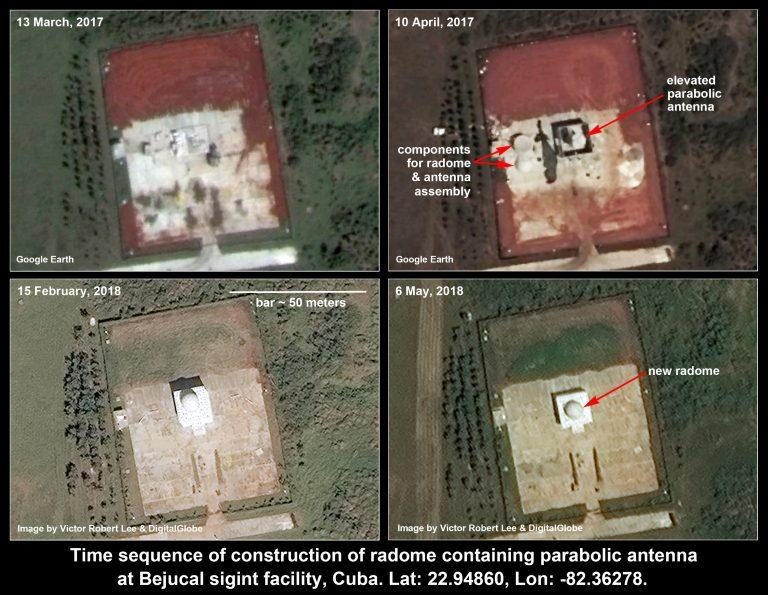
"The difference in size and architecture of the new radome antenna structure compared to the stand-alone parabolic dish installations present over the past ten years at Bejucal indicates a new level of investment in such facilities; the source of this investment is not clear."
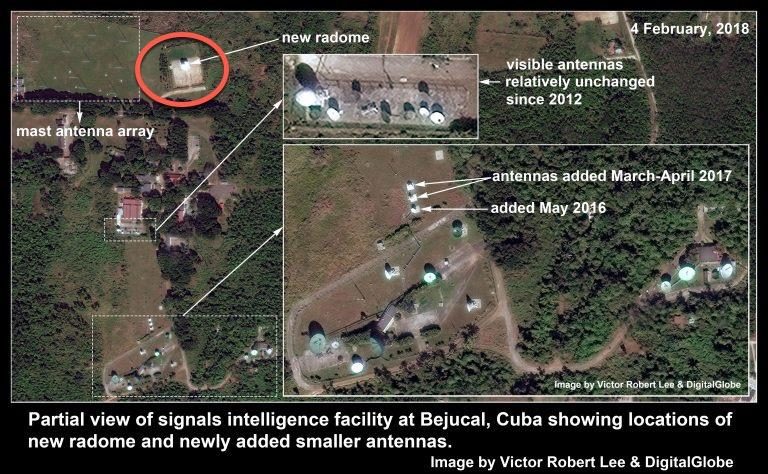
"The governments of both Russia and China have recently signaled their intent to augment military and economic investments in Cuba. In 2014, Russian President Vladimir Putin wrote off approximately 90 percent of the $32 billion Cuba owed on Soviet-era debt. In the same year, a Russian member of parliament stated that Russia would re-establish the sort of collaboration with Cuba it had had at the Lourdes signals intelligence site south of Havana during the Cold War (Lourdes was shut down in 2001).Interesting enough, China is Cuba's most significant international creditor and trading partner. Several Chinese companies have announced major development plans in Cuba over the last several years.
The Russian administration denied this shortly afterward, but in 2016 a senior Russian defense official suggested Russia was considering reopening a military base in Cuba. The Russian signals intelligence ship Viktor Leonov docked at the port of Havana in 2014, 2015, 2017, and most recently in March 2018, following a reconnaissance patrol along the southeast coast of the U.S. that included an excursion within 20 nautical miles of the Kings Bay submarine base in Georgia. In 2017 Russia completed a new satellite communications ground station not far from Cuba, in Nicaragua, purportedly for GPS-type signals, but other uses cannot be ruled out."
"Cuba's largest international creditor and trading partner is China, which recently made a $120 million development loan for a container port at Santiago de Cuba. In the past three years, several Chinese companies have announced investments in production and research facilities in Cuba, as well as a proposed $460 million golf course near Havana."As there is limited evidence via the satellite imagery indicating Beijing is behind the radome construction, U.S. Senator Marco Rubio warned in 2016 that Beijing and Cuba were working on a program to improve the island's electronic surveillance spy bases.
"These followed a state visit to Cuba by China's President Xi Jinping in 2014, in which he met with then-president Raúl Castro as well as the ailing Fidel Castro. Chinese Prime Minister Li Keqiang visited in 2016, meeting with both Castro brothers and signing 20 cooperation agreements between the two countries. Reciprocal visits by high-level Cuban and Chinese military leaders took place in 2015-2017.In February, we covered a surveillance imagery report from an undisclosed source, most likely from the Philippine National Intelligence Coordinating Agency (NICA), given to the Philippine Daily Inquirer as a treasure trove of new surveillance images which depicts Beijing's drive to militarize the heavily disputed artificially-created islands it controls in the South China Sea. As shown below, the Chinese radome in the South China Sea (right) and the Cuban radome (left) look very similar in design.
There is scant public evidence that Beijing is behind the new radome at Bejucal, but U.S. Senator Marco Rubio, a member of the Senate's Committee on Foreign Relations as well as the Select Committee on Intelligence, identified China in 2016 as being active in Cuba-based electronic surveillance of the U.S. by referring publicly to "this Chinese listening station in Bejucal."
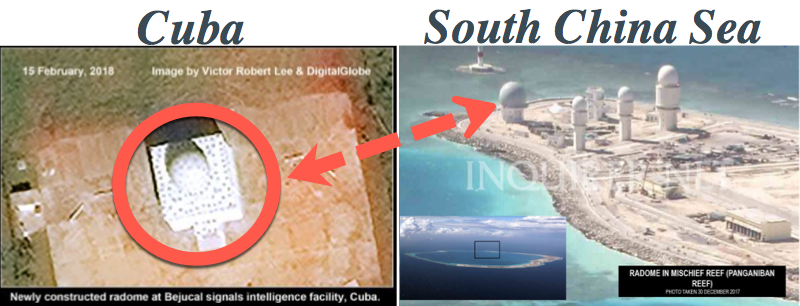
In the visual below, there is a reason to believe the new radome could spy on USAF airbases, U.S. Central Command, and even as far as Washington, D.C. Which begs the question, was it Russia or China that financed the spy antenna?
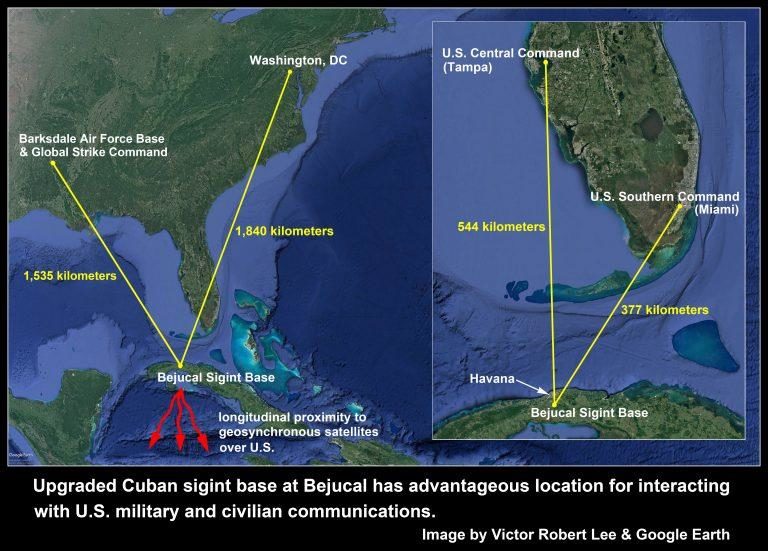



Reader Comments